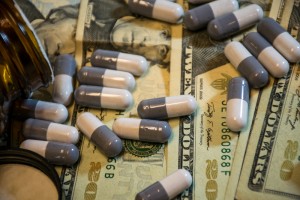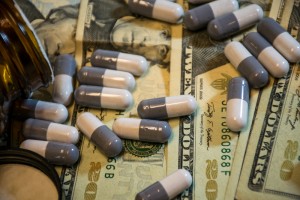A detailed report by The Washington Post indicates that they have obtained unsealed documents showing how big drug companies stood up to the DEA. At the center of the report is the opioid epidemic in the United States, which has claimed more than 220,000 lives since 1999. In a civil case in Cleveland, documents reveal that “drug companies convinced members of Congress and Obama administration officials to rein in the DEA and force the agency to treat them as ‘partners’ in efforts to solve the crisis.”
Because of these efforts, the Marino bill was passed, preventing the DEA from suspending drug companies that are being unlawful. The fact that this bill was even considered, let alone passed, shows just how powerful these big pharmaceutical companies are. Over the last several years, reporters at The Post have been investigating how drug companies are connected to the DEA and whether or not this has impacted the continued opioid epidemic. In the past, The Post found it difficult to find those with information on the connection to talk. Thanks to the lawsuit filed in Cleveland, information has started to come to light.
Who Is Big Pharma?
Drug companies are more powerful than many in the general population realize. However, as medical malpractice has started to make headlines, the role of these companies is being scrutinized. Right now, medical malpractice is the third-leading cause of death in the United States. Only cancer and heart disease kill more people. Medical malpractice is an umbrella term that covers everything from preventable mistakes to prescription errors and misdiagnosis.
However, there is an even darker side of medical malpractice: big pharma silencing the DEA. While advocates for the Marino bill claim that “the intent of the law was not to decrease the DEA’s enforcement against distributors”, others are skeptical.
The Evidence
At the start of 2006, the DEA started targeting major pharmaceutical manufacturers and distributors for failing to report the millions of opioids that made it into the black market. From 2006 to 2016, the DEA headed two dozen civil cases and made drug companies pay more than $500 million in fines. However, drug companies pushed back, saying the DEA had become too intrusive. To get the DEA off their backs, top officials of these companies came up with a strategy they knew the DEA would get behind. But in reality, the drug companies never had any intention of working with the DEA to curtail the opioid epidemic.
They were at the center of the problem, yet they wanted no part in fixing it.
The Growing Opioid Epidemic
According to statistics, 130 people die every single day from opioid-related drug overdoses. By 2005, more than 10,000 people were dying a year from the opioid crisis. While the Marine bill had largely succeeded in stopping the DEA from meddling in the actions of big pharma, they weren’t about to give up that easily.
Unfortunately, drug companies have long taken advantage of American doctors and citizens alike. Over the last 20 years, we have seen a dramatic increase in the number of prescriptions written. In 2017 alone, doctors wrote more than 191 million prescriptions for opioids. Also, during this time, pharmaceutical companies were reassuring healthcare providers that opioids were not addictive.
As we have now learned, that couldn’t have been further from the truth.
Later in 2006, the DEA decided to crack down on internet pharmacies and doctors that were taking advantage of patients. Even though the DEA had spent years relying on doctors, pharmacies, and drug companies to monitor any suspicious activity, they were now turning their focus to their former allies. In August of that year, the DEA began investigating the largest drug distributor in the United States, McKesson. Having learned that the distributor had been filling hundreds of unsubstantiated orders of hydrocodone, the DEA wanted McKesson shutdown.
At this point, the nation’s other two largest drug distributors become involved, and things took a turn. Unfortunately, while the DEA’s efforts were applauded, and it became clear that at least some of the officials were dedicated to stopping big pharma and the opioid crisis, they were defeated. The DEA would eventually succumb to industry pressure from Congress and other high-ranking officials.
As of the publishing date of this article, the Marino bill is still in effect, and drug companies continue to play a hand in America’s opioid epidemic.
Is Malpractice To Blame?
The information from this report shouldn’t necessarily come as a shock as we continue to witness the gross negligence within the healthcare community. Hospitals are no longer meeting the standard of care set in place, and patients are dying as a result. Doctors are purposely misdiagnosing patients to get rewards and bonuses from drug companies and medical device manufacturers.
That’s not all.
This is just the tip of the iceberg with medical malpractice. When we hear about medical errors or negligence on the news these days, it is often doctors, nurses, caregivers, and other healthcare staff members at the center. However, drug manufacturers and distributors are often to blame.
Drug Companies And Medical Malpractice
One of the most frequently seen causes of medical malpractice is defective drugs. In many cases, doctors unknowingly prescribe medications to patients that could harm them. When drug manufacturers and distributors fail to disclose all of the information about a drug, including potential risks and side effects, they are acting negligently.
Other common examples of medical malpractice include:
- Improperly filled prescriptions
- Long-term side effects of drugs
- Wrong prescription
In Western medicine, prescription drugs play an instrumental role in a patient’s overall wellness plan. However, as the opioid crisis continues to take lives, and more and more Americans abuse their prescriptions (11.4 million people misuse opioids), the role of drug companies is being scrutinized.
Here are a few more statistics about the opioid crisis from the U.S. Department of Health and Human Services from 2017:
- More than 2.1 million people have an opioid disorder
- 47,600 people died from overdosing on opioids
- 2 million people misused opioid prescriptions for the first time
- 81,000 people used heroin for the first time
- 28,466 people died from overdosing on synthetic opioids
The opioid crisis didn’t start out of thin air. As The Washington Post discusses, drug companies knowingly spilled opioids onto the black market, starting what is now an epidemic. As more and more people die because of prescription drugs, it is time those responsible are held accountable.
Filing a medical malpractice lawsuit is challenging, but it needs to happen for us to stand up to these pharmaceutical companies that have taken advantage of us. If you would like to learn more about what it takes to file a medical malpractice lawsuit in Texas, please contact Wormington & Bollinger today.





